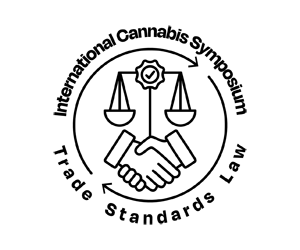Despite its brevity, the DEA letter I received last week about THCO was followed by confusion and lots of speculation in the cannabis industry about the legal status of novel and mood-altering cannabinoids. This is unfortunate, because I think the letter provided additional clarity, not just about THCO, but about cannabinoids in general. In this article, I will break down the legal status of novel and mood-altering cannabinoids, including a discussion of the “synthetic versus natural” issue that is dominating much of the cannabis conversation in cannabis media and state legislatures. This may sound like a lot, but it is actually pretty straightforward.
Part 1- The DEA letter did not address delta-8 THC
I will start by clearing up a primary point of confusion. The DEA did not state that delta-8 THC is a controlled substance. The DEA’s letter was solely about THCO, specifically, two forms of THCO: delta-8 THCO and delta-9 THCO. The DEA letter did not discuss delta-8 THC, which it has previously stated is not a controlled substance.
Even though the abbreviations are similar, delta-8 THC is a different molecule from delta-8 THCO. This point is easy to grasp when we look at the actual names of the compounds we are discussing, rather than their abbreviations. The DEA letter was about delta-8 and delta-9 “tetrahydrocannabinol acetate ester” (THCO). This a different compound from “tetrahydrocannabinol” (THC). The “delta”, followed by the number 8 or 9, is a specific designation regarding the location of a double carbon bond on the chain of carbon atoms shared by both THC and THCO. Specifically, a “delta-8” molecule has the double bond on the eighth carbon atom in its molecular structure and a “delta-9” molecule has the double bond on the ninth carbon atom. So, “delta-8 THC” refers to a tetrahydrocannabinol molecule with a double bond on the eighth carbon atom. “Delta-8 THCO” refers to a different molecule, tetrahydrocannabinol acetate ester, with a double bon on the eighth molecule.
The bottom line is that, although they share some similarities, delta-8 THCO is a different compound from delta-8 THC. In fact, delta-8 THC can be used as a starter compound to synthesize delta-8 THCO in a lab. Additionally, delta-8 THC is naturally produced by the cannabis plant, a crucial point discussed below; delta-8 THCO is not. At the risk of redundancy, the DEA letter solely addressed THCO, not delta-8 THC, delta-9 THC, or delta-10 THC.
Part 2- What can we infer from the letter about the legal status of other cannabinoids?
Although the DEA letter was solely about THCO, if we view it in conjunction with the plain language of the 2018 Farm Bill and prior DEA statements, we can see a picture emerge as to how the DEA views novel and mood-altering cannabinoids. Here’s what we know:
- The DEA letter about THCO states: “Delta-9-THCO and delta-8-THCO do not occur naturally in the cannabis plant and can only be obtained synthetically, and therefore do not fall under the definition of hemp.”
- During a video webinar called a “Town Hall with USDA and DEA” conducted by the Florida Department of Agriculture and Consumer Services (“FLDACS”) on June 24, 2021, in response to a question about delta-8 THC, the DEA stated: “I also want to expand beyond delta-8. There’s delta-8, there’s delta-10, there’s all kind of different cannabinoids that are associated with cannabis sativa l that are kind of out there and making the rounds. So what I want to say, and I’ll be very, very deliberate and clear. At this time, I repeat again, at this time, per the Farm Bill, the only thing that is a controlled substance is delta-9 THC greater than 0.3% on a dry-weight basis.”
- A DEA letter to the Alabama Board of Pharmacy dated September 15, 2021 states: “only tetrahydrocannabinol in or derived from the cannabis plant—not synthetic tetrahydrocannabinol—is subject to being excluded from control as a “tetrahydrocannabinol[] in hemp.” With respect to “synthetic THC”, the DEA clarifies in the letter that it means, “produced synthetically from non-cannabis materials.”
Based on these statements, the DEA only considers material that the cannabis plant naturally produces with delta-9 THC concentrations that do not exceed 0.3% by dry weight to be lawful “hemp”. Importantly, the fact that the material in question may have been produced in a lab appears to be immaterial, provided that the cannabis plant naturally produces that type of material and the material in question was derived from the cannabis plant. This is why delta-8 THC and delta-10 THC, which are often created in a lab, are not controlled substances. They are derived from the cannabis plant (usually from extracted CBD) and the cannabis plant naturally produces them. (Click here for a deeper analysis on delta-8 THC.) On the other hand, if the material is a form of THC that the plant does not naturally produce it is controlled. This is why THCO is controlled.
A quick way to determine if a particular cannabis (or cannabis-like) substance is lawful “hemp”, ask:
- Does the cannabis plant naturally produce this substance?
- Does this substance have delta-9 THC concentrations above 0.3%?
If the answer to either question is “no”, then it is not lawful hemp.
Part 3- Conclusion
This article solely addresses the legal status of cannabinoids at the federal level. Although they shouldn’t, state laws vary considerably on this issue. Notably, this article does not address the FDA and its tortured response to the emergence of hemp-based cannabinoid products. Finally, it does not address how these products should be marketed. Certainly, mood-altering hemp cannabinoid products should not be sold to minors. Those are all issues for another article. Hopefully, the control status of hemp cannabinoids is now clearer. Feel free to contact me if you have questions or want assistance with your cannabis business.
https://cannabusiness.law/cannabinoid-breakdown-analyzing-the-deas-position-on-novel-cannabinoids/




















